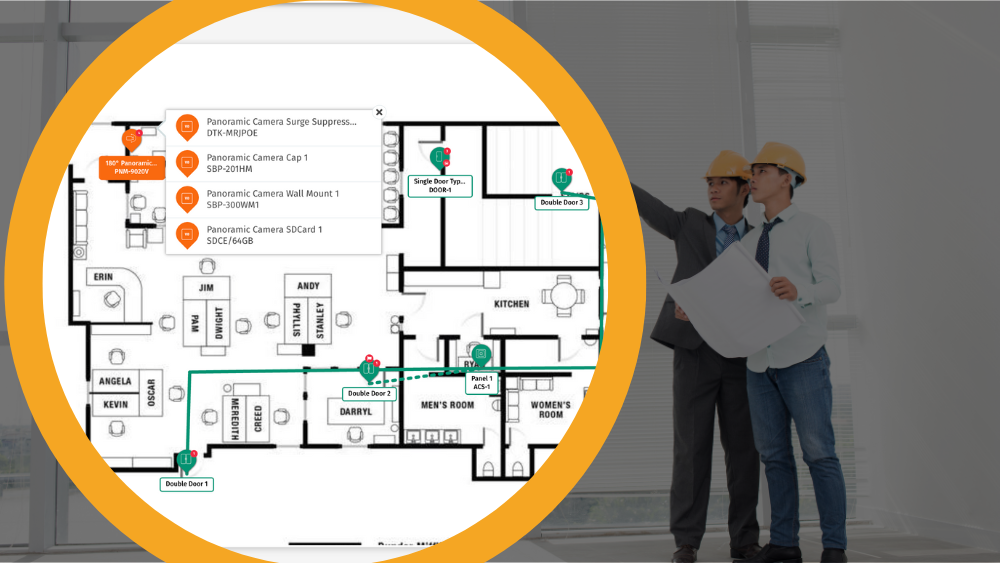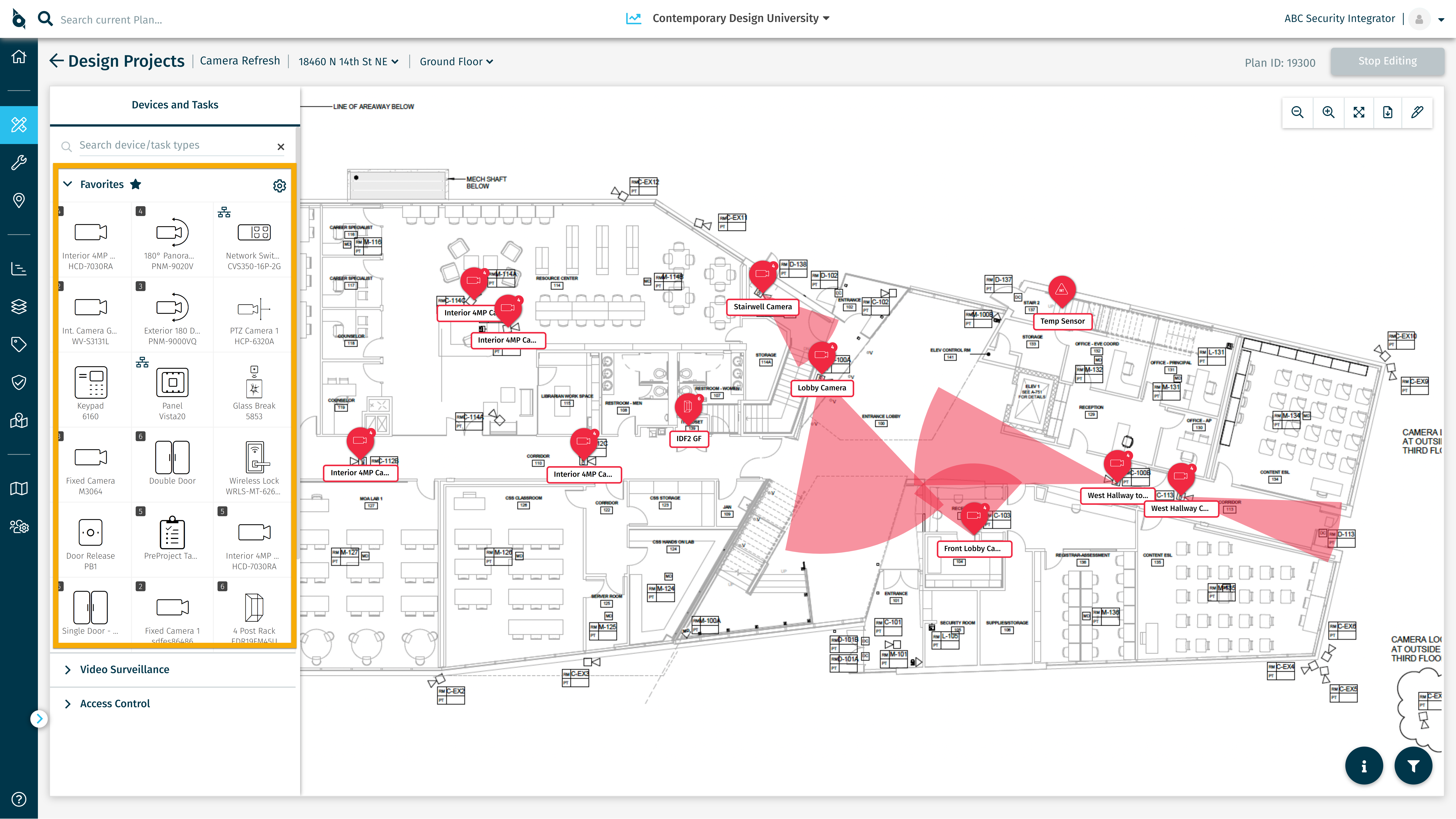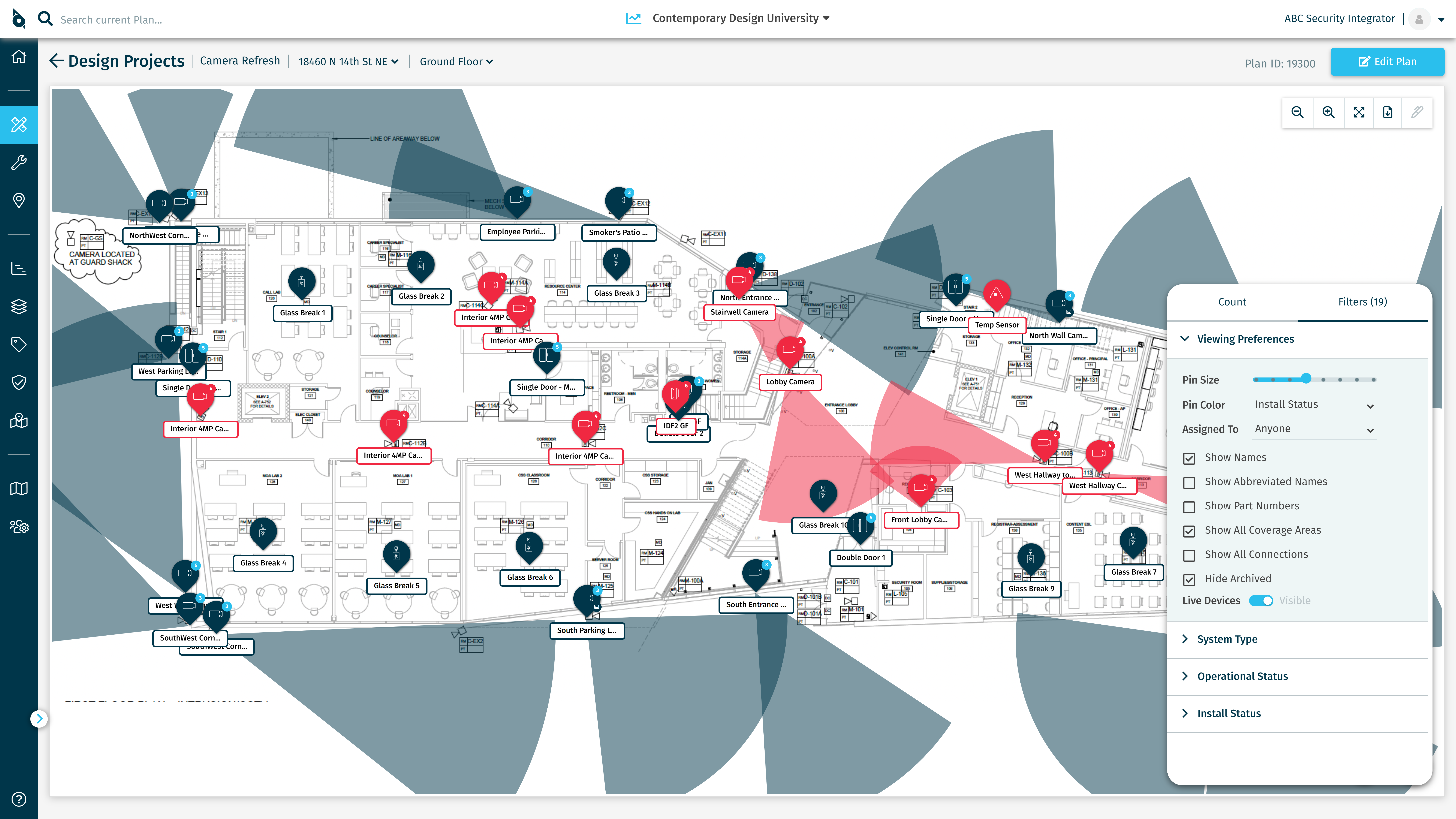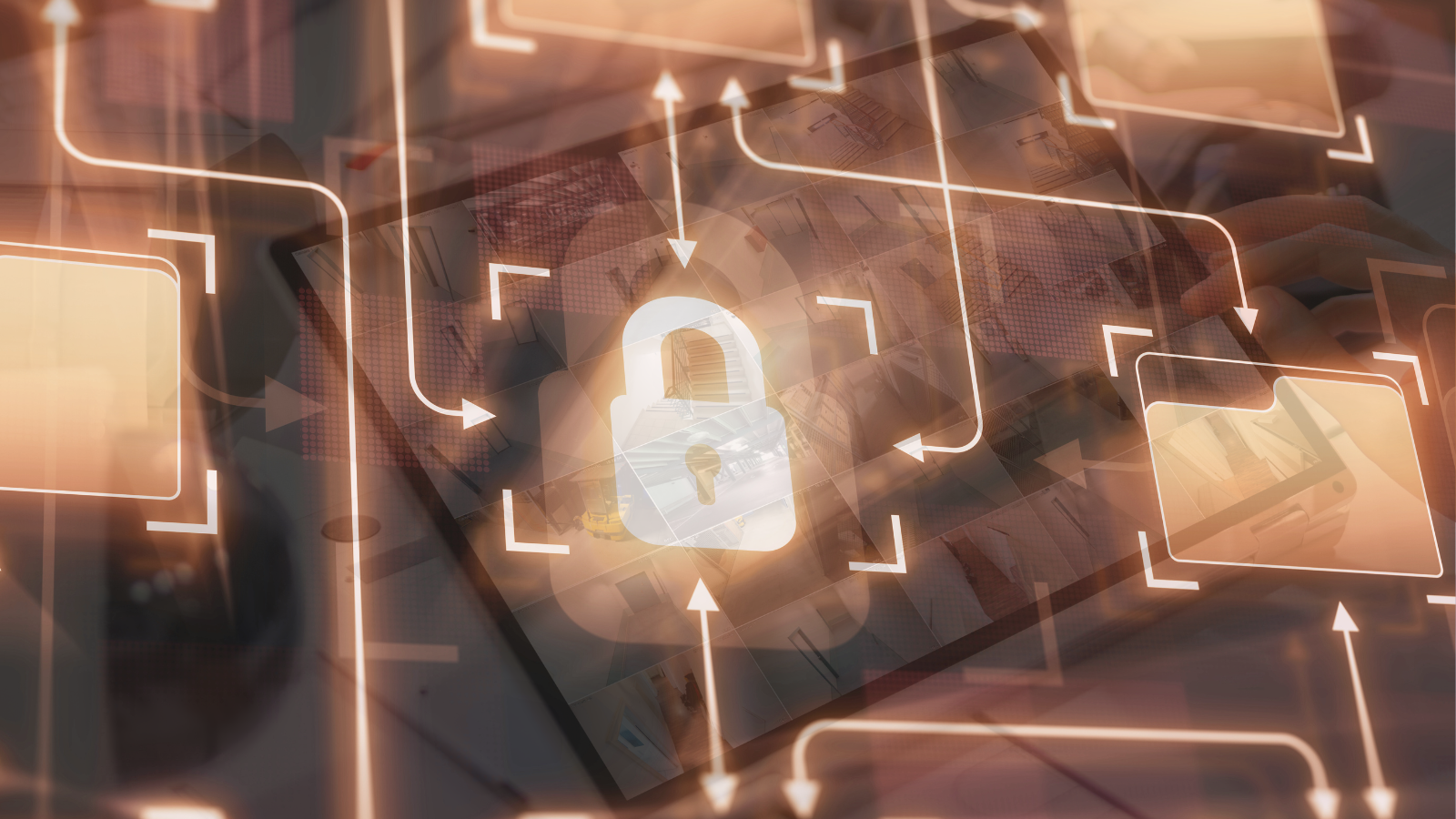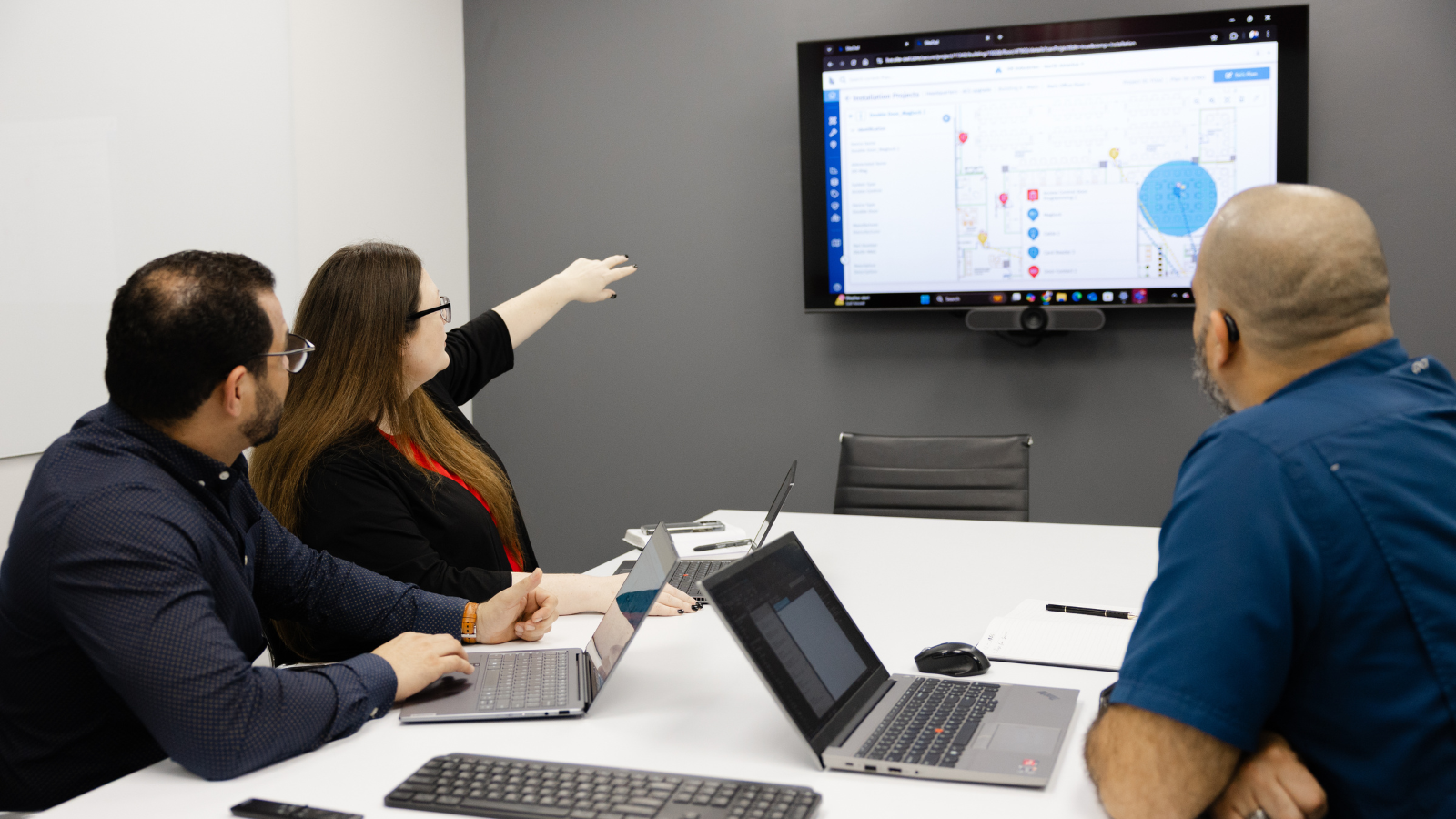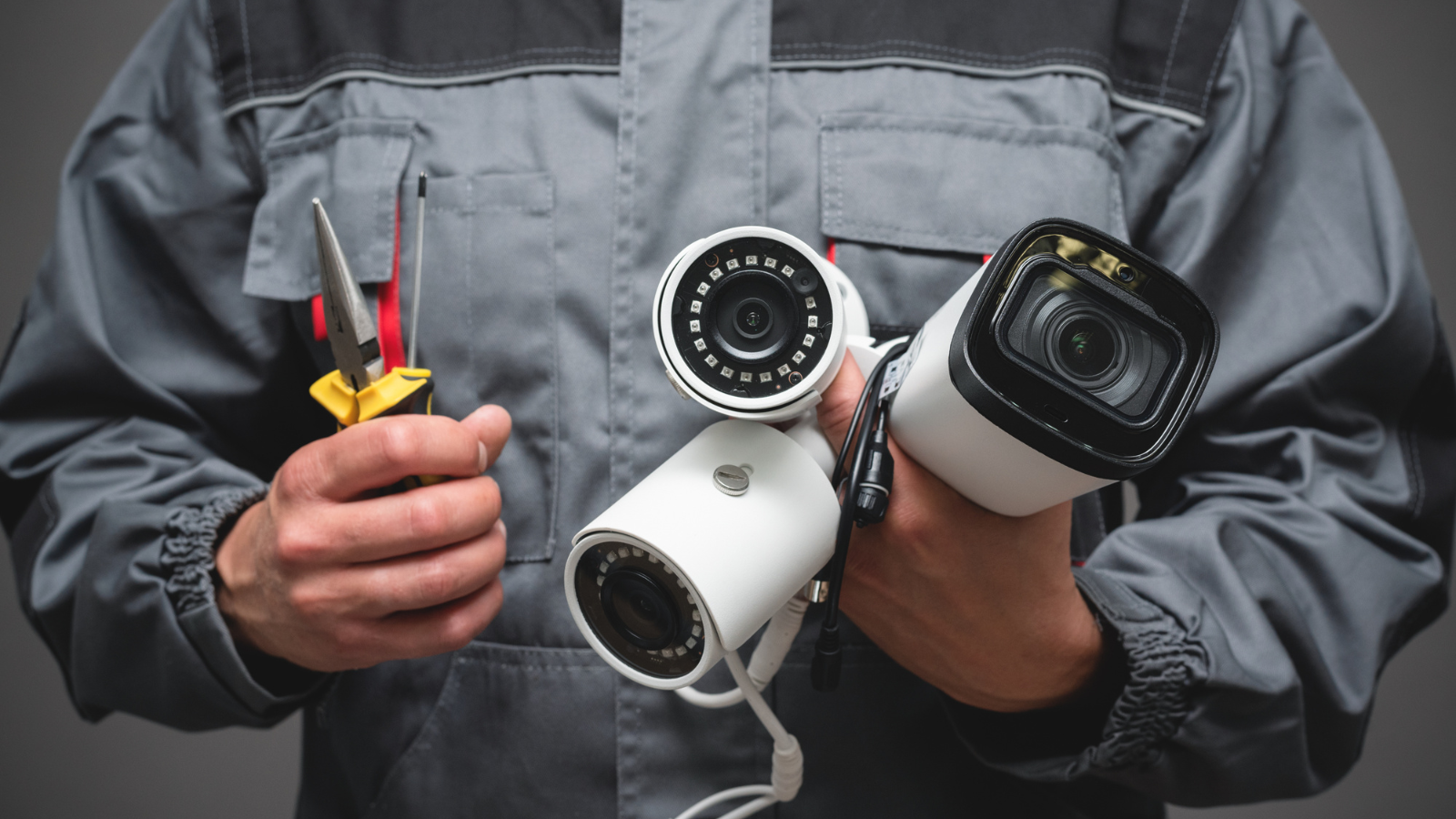Table of Contents
- Standardize security system design
- Adopt modular security systems
- Take advantage of the cloud
- Collaborate with experts, stakeholders and partners
- Design Bullet-Proof Security Plans With Ease
In the ever-evolving world of technology, security has never been more critical. With a whopping 88% of business and security leaders reporting an increase in physical threats to their organizations compared to previous years, staying up-to-date on the latest security measures is essential.
But how can security teams build physical security systems rapidly without compromising effectiveness? In this article, we’ll discuss four ways to create robust security designs quickly by leveraging lessons learned from past projects and using a flexible, data-driven approach.
1. Standardize security system design
Standardization of physical security system design is a process of developing guidelines, procedures, and requirements that define how to design, install, and maintain a physical security system. This makes sure that the security system is effective, reliable, and consistent across different locations.
Here are some examples of standardization in security system design:
- Access Control: Standardizing the placement of access control devices such as card readers, keypads, and biometric scanners.
- Video surveillance: Standardizing the placement of cameras, the type of cameras to be used, and the storage of video footage.
- Intrusion detection: Standardizing the placement of sensors, the type of sensors to be used, and the integration of the sensors with other security systems.
Standardization can help security teams build security designs faster in several ways:
- Increased efficiency. With a standardized physical security system design, security teams can follow a predetermined set of guidelines and procedures that have been proven to work effectively. This eliminates the need for lengthy planning and decision-making processes, which can result in faster design and implementation of the security system.
- Consistency. Standardization ensures consistency across different locations and facilities, which means that security teams can reuse designs that have already been developed and tested. This not only saves time, but also ensures that the security system is effective and reliable.
- Simplified training. When security teams use a standardized design, they don’t need to spend as much time training new team members on how to design and implement the security system. Instead, they can simply train them on the existing standard design and procedures, which speeds up the onboarding process.
- Streamlined documentation. With standardized physical security system design, security teams can create a single set of guidelines, procedures, and documentation that can be used across all locations and facilities. This simplifies the documentation process and ensures that everyone is using the same information, which makes it easier to track progress and make updates as needed.
Using a platform like SiteOwl can help you standardize your equipment packages across your entire infrastructure using device “favorites” that you can simply drag and drop on a digital floorplan. This allows you to build security designs very quickly and in collaboration with other internal and external teams.
2. Adopt modular security systems
Modular physical security systems are like pre-packaged security kits that are designed to be easily installed and customized to meet the specific needs of a facility. These systems consist of pre-built components that can be easily assembled and integrated, which makes them faster and easier to install than traditional security systems.
For example, many video surveillance systems are modular, consisting of pre-configured cameras, network video recorders, and other components that can be easily installed and configured. Modular intrusion detection systems often consist of pre-engineered sensors, controllers, and software.
Modular systems offer many benefits over traditional systems, including:
- Faster installation. Since modular systems are pre-built, they’re faster to install than traditional systems.
- Cost-effective. Modular systems typically require less on-site customization, which can help reduce installation costs.
- Scalability. Modular physical security systems can be easily scaled up or down to meet changing security needs. As a facility grows or changes, additional components can be added or removed as needed.
- Flexibility. Modular systems are highly customizable and can be configured to meet the specific security needs of a facility. This allows security teams to tailor the system to their unique requirements.
Whether you’re designing video surveillance, access control, or other security systems, using a digital platform like SiteOwl, allows security teams to visualize existing infrastructure when building new designs, improving the effectiveness of the security system on the whole.
3. Take advantage of the cloud
Cloud-based physical security systems are seeing higher adoption, and with good reason. These systems use a subscription-based model, making it easy to scale up or down based on the needs of the organization. Additionally, security teams can rapidly build security designs without worrying about the cost and complexity of on-site infrastructure.
Using cloud-based security systems has a bunch of benefits, including:
- Lower Cost. Cloud-based physical security systems don’t need as much on-site hardware and software, so they’re cheaper to set up. Instead, organizations pay a monthly fee to access the cloud-based security system, which can be more cost-effective in the long run.
- Scalability. These systems can easily be expanded or reduced depending on the organization’s needs. This is great for businesses that have changing security requirements, like seasonal operations.
- Remote Access. Security personnel can monitor and manage security events from anywhere with an internet connection. This makes it easier to keep an eye on things and respond to any issues that arise.
- Flexibility. Cloud-based systems offer a wide range of security applications like access control, video surveillance, and intrusion detection. Organizations can choose which features they need and easily add or remove them as their needs change.
- Automatic Updates. Cloud solutions offer automatic software updates, eliminating the need for on-site maintenance and reducing the risk of security vulnerabilities.
- Data Backup. With automatic data backup, security data is always available in case of a disaster or system failure.
4. Collaborate with experts, stakeholders and partners
Taking on a collaborative approach to building physical security designs can be highly effective. Did you know that over 75% of U.S. workers rate teamwork and collaboration as very important? That’s why smart security folks know to get a diverse group of people involved early on, like consultants, integrators, and facility managers. By getting everyone’s input early on in the design process, you can make sure you’ve covered all the bases and created a strong design. And, if you want to get everyone on board with your plan, make sure to have a solid process for reviewing issues and making decisions so you can increase leadership buy-in.
Collaboration has many benefits, including:
- Comprehensive expertise. Security experts, stakeholders, and partners can provide valuable insight and expertise in different areas of security design. By collaborating, you can tap into a wide range of knowledge and skills to create a more comprehensive security system.
- Broader perspective. Bringing together a diverse group of people can help make sure everyone’s perspective is considered when designing a security system. That way, you can create a stronger and more effective design that takes into account everyone’s needs and concerns.
- Better buy-in. When stakeholders and partners are involved in the design process, they are more likely to feel invested in the final product. This can lead to increased buy-in and support for the security system, which is important for successful implementation.
- Cost savings. Collaborating allows you to identify opportunities to share resources and reduce costs. For example, partnering with a security integrator can help you access the latest technologies at a lower cost.
- Increased efficiency. Working with internal and external teams can help streamline the design process and ensure that the security system is built quickly and efficiently.
Platforms like SiteOwl help security teams collaboratively build designs with ease. Whether you’re working with a security consultant or integrator, or even other stakeholders, all parties can simultaneously review, edit and add information to the security designs.

5. Design Bullet-Proof Security Plans With Ease
SiteOwl is the go-to solution for physical security professionals as it provides an all-in-one platform for designing, installing, and managing security systems with ease, reducing the likelihood of physical security system outages. With SiteOwl, security professionals can mitigate risks and improve their security posture, ensuring they are always one step ahead of potential threats.
Request a demo today!

Su Subburaj
Su is SiteOwl's CMO and leads all marketing and communications. Su has extensive strategy and management consulting experience and previously consulted for 3Sixty Integrated where she gained an in-depth understanding of digital transformation challenges in the physical security industry. When not working on strategies to expand SiteOwl's footprint, Su enjoys bad karaoke, weightlifting and traveling.
